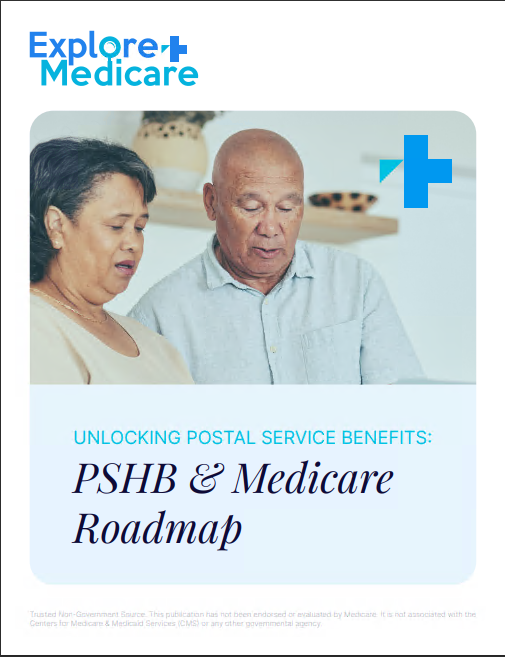Key Takeaways
-
Choosing the right Medicare Part D plan in 2025 involves more than comparing premiums. You need to consider the total yearly cost, including deductibles, copayments, coinsurance, and out-of-network rules.
-
Your medications, preferred pharmacy, and even where you live all influence how much you end up paying under Part D. Comparing plans during open enrollment is critical to avoid overpaying.
Why Picking the Right Plan Matters
Medicare Part D provides prescription drug coverage to millions of Americans. But in 2025, not all plans are built the same, and if you choose one without evaluating how it aligns with your medication needs, you could spend far more than necessary.
Each plan has its own list of covered drugs (formulary), cost structure, and pharmacy network. That means your out-of-pocket expenses can vary significantly depending on the plan you select. The wrong choice might not only lead to higher monthly premiums but also unexpected charges when you fill your prescriptions.
Understand the Basics First
Before comparing plans, it helps to understand what a standard Part D plan generally includes in 2025:
-
Annual Deductible: Up to $590 for most plans
-
Initial Coverage: You pay coinsurance or copayments until total drug costs reach $5,030
-
Catastrophic Coverage Threshold: You pay nothing beyond $2,000 in out-of-pocket costs, thanks to the new cap introduced in 2025
Every plan must comply with these structure rules, but each can charge different amounts for premiums, copays, and preferred drugs.
1. List Your Current Prescriptions
Start by writing down every medication you take, including dosage and frequency. This list is central to finding a plan that covers your needs without gaps. Be sure to include any specialty or high-cost medications, as they can dramatically affect your total costs.
2. Use the Medicare Plan Finder Tool
During the annual Open Enrollment Period (October 15 to December 7), the Medicare Plan Finder on Medicare.gov is the best resource available to compare options. You can:
-
Enter your zip code and drug list
-
Compare estimated annual costs across multiple plans
-
Check if your preferred pharmacies are in-network
This tool reflects the most current information on plans available in your area, helping you make a cost-effective choice.
3. Evaluate Total Cost—Not Just Premiums
The plan with the lowest monthly premium may not be the cheapest overall. You need to factor in:
-
Deductibles
-
Copayments and coinsurance for your specific medications
-
Tiered drug pricing, which varies between generic, preferred brand-name, and specialty drugs
A plan with a slightly higher premium but lower medication costs could save you hundreds over the year.
4. Pay Attention to the Drug Formulary
Each Part D plan has its own formulary, or list of covered medications. Plans categorize drugs into tiers:
-
Tier 1: Preferred generics (lowest cost)
-
Tier 2: Generic drugs
-
Tier 3: Preferred brand-name drugs
-
Tier 4: Non-preferred drugs
-
Tier 5: Specialty drugs (highest cost)
Make sure the medications you take are on the formulary and, ideally, in the lowest-cost tiers. If a drug you need isn’t listed, you may need to request an exception or pay out-of-pocket.
5. Confirm Your Pharmacy is Covered
Plans often contract with specific pharmacies to offer lower pricing. Using an out-of-network pharmacy can lead to significantly higher costs. The Medicare Plan Finder shows which pharmacies each plan considers “preferred.”
In 2025, many plans offer mail-order pharmacies as well, which could be more convenient and cost-effective.
6. Understand Prior Authorization and Other Rules
Some drugs require additional steps before coverage kicks in:
-
Prior Authorization: You need approval before the plan covers the drug
-
Step Therapy: You must try a lower-cost drug first
-
Quantity Limits: Restrictions on how much you can get at once
If your medications have these rules, delays or denied coverage can occur unless your doctor and pharmacy coordinate closely with the plan.
7. Reevaluate Your Plan Annually
Plans can change their formularies, pricing structures, and pharmacy networks from year to year. Even if your current plan worked well in 2024, it may not serve you as well in 2025.
Each fall, you’ll receive an Annual Notice of Change from your current plan. Compare it against other plans during the Open Enrollment Period.
8. Watch for the Out-of-Pocket Cap
A major change in 2025 is the introduction of a $2,000 cap on out-of-pocket drug costs under Part D. Once your total personal spending hits this threshold, the plan pays 100% of drug costs for the rest of the year.
This significantly reduces financial risk, especially for those who take expensive medications. However, the speed at which you reach this cap still depends on the plan’s pricing for your specific drugs.
9. Know the Penalty for Missing Enrollment
If you don’t sign up for a Part D plan when you’re first eligible and don’t have creditable drug coverage elsewhere, you may face a late enrollment penalty. This penalty adds to your monthly premium permanently.
The best time to enroll is during your Initial Enrollment Period—a 7-month window that includes:
-
3 months before your 65th birthday
-
The month of your 65th birthday
-
3 months after
10. Special Enrollment Periods Exist
Outside of the annual Open Enrollment, you may qualify for a Special Enrollment Period due to life events like:
-
Moving to a new area
-
Losing other drug coverage
-
Entering or leaving a long-term care facility
During these windows, you can switch plans without penalty.
What to Keep in Mind Going Forward
Picking a Part D plan is never a one-and-done task. Your health needs may evolve, drug formularies shift, and plan details change every year. What works in 2025 might not be the best fit in 2026.
Make reviewing your plan an annual habit. Doing so helps you avoid overpaying, missing coverage for critical medications, or dealing with surprise restrictions.
Review Your Part D Coverage With a Professional
Choosing the right plan can be overwhelming. To get help tailored to your needs, speak with a licensed insurance agent listed on this website. They can:
-
Review your medication list
-
Compare plans based on cost and coverage
-
Ensure you don’t miss key deadlines or pay unnecessary penalties
Don’t let Part D choices catch you off guard—get support and make a confident decision.









